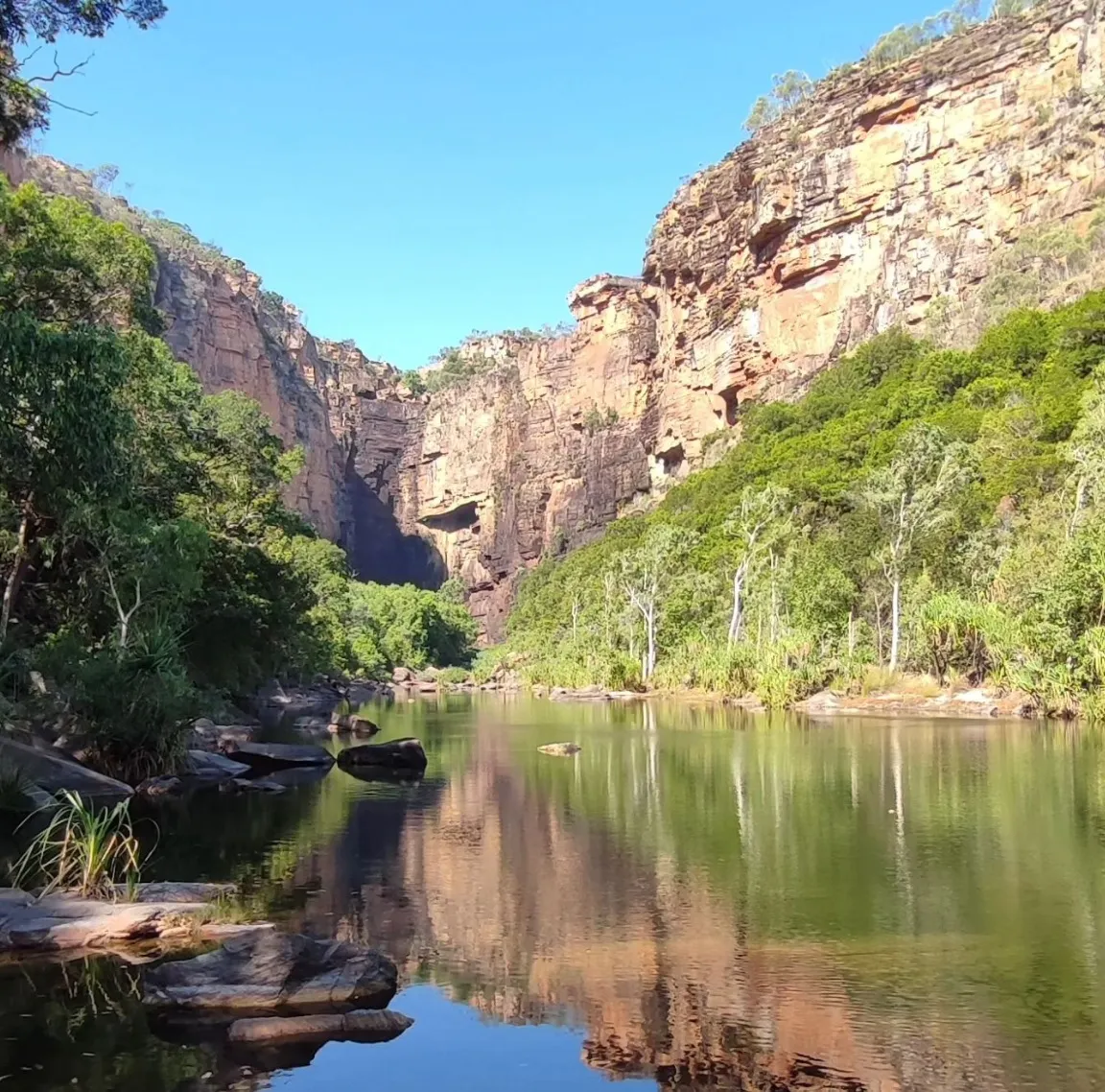Kakadu National Park, a UNESCO World Heritage site in Australia’s Northern Territory, is famous for its beautiful landscapes, rich biodiversity and cultural significance. Many people associate Kakadu with the dry season, but the wet season is just as special. If you’re thinking of visiting Kakadu during the wet season, here’s everything you need to know to make the most of it.
Wet Season Kakadu
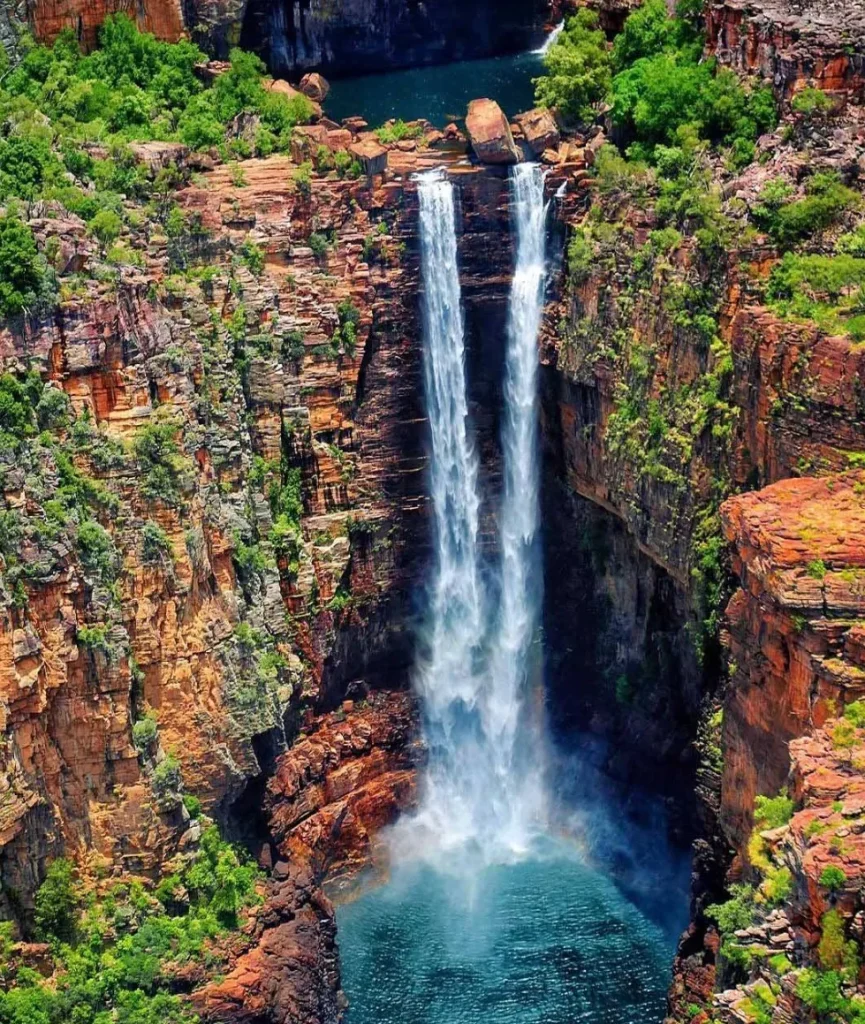
The wet season in Kakadu runs from November to April and turns the park into a lush wonderland. Rain fills the land, turning dry expanses into a green and wetland extravaganza. As the rain clouds gather and tropical storms roll in, the landscape is painted with shades of green and gold and bursts of colourful water lilies in the shallow wetlands and billabongs. It’s the perfect time to see the park’s ecosystems at their most active, where the once-dry land is now alive and moving.
Why Wet Season for Your Kakadu Adventure?
Lush Landscapes and Wildlife
In the wet season, also known as the green season, Kakadu becomes a green oasis. Rain pours down and the sandstone country turns silver green. Rivers are full and floodwaters retreat to reveal shallow wetlands full of water lilies. This is the time to see Kakadu’s wildlife and plant life in abundance and at its best.
Waterfalls and Waterways
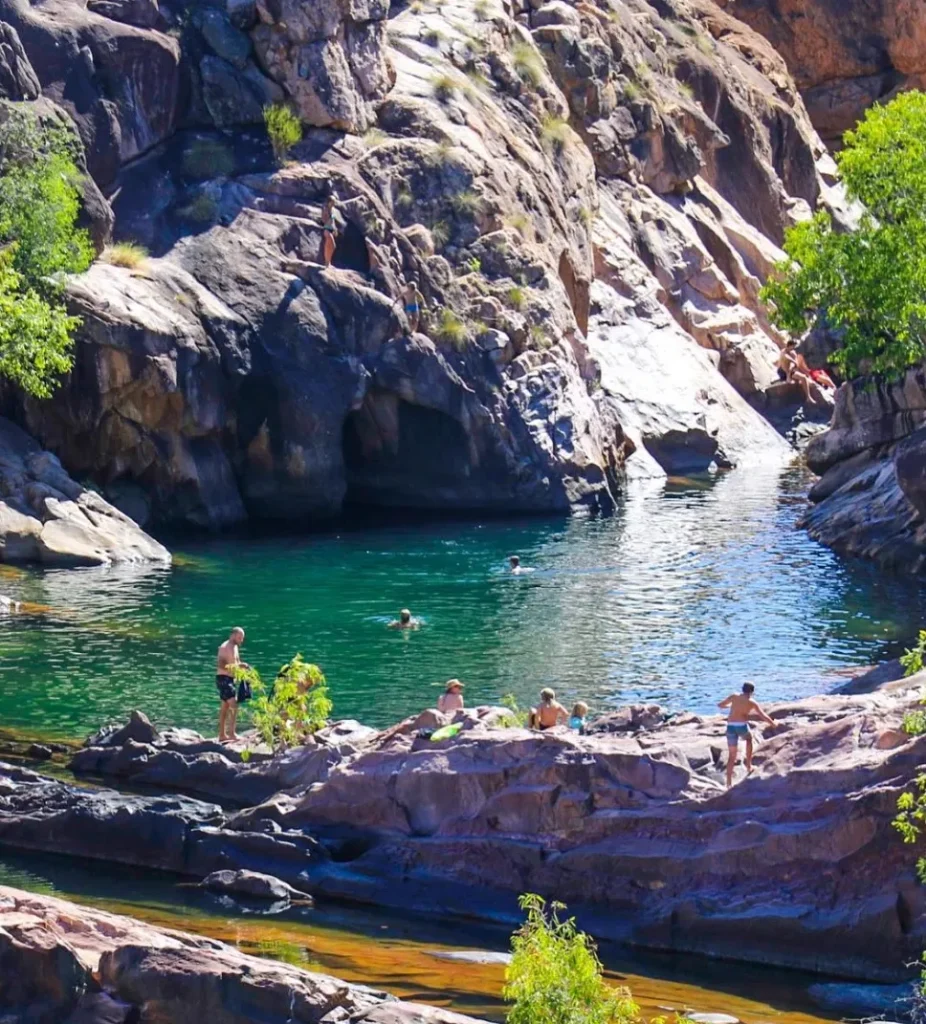

The wet season is the best time to see Kakadu’s famous waterfalls. Jim Jim Falls and Twin Falls are at their highest and most impressive, with great views and swimming. Gunlom Falls and Tolmer Falls also have spectacular cascades at this time. The increased water flow makes boat cruises and fishing across the park’s many rivers and billabongs, including the Mary River and Yellow Water Billabong, even more enjoyable.
Cultural Experiences
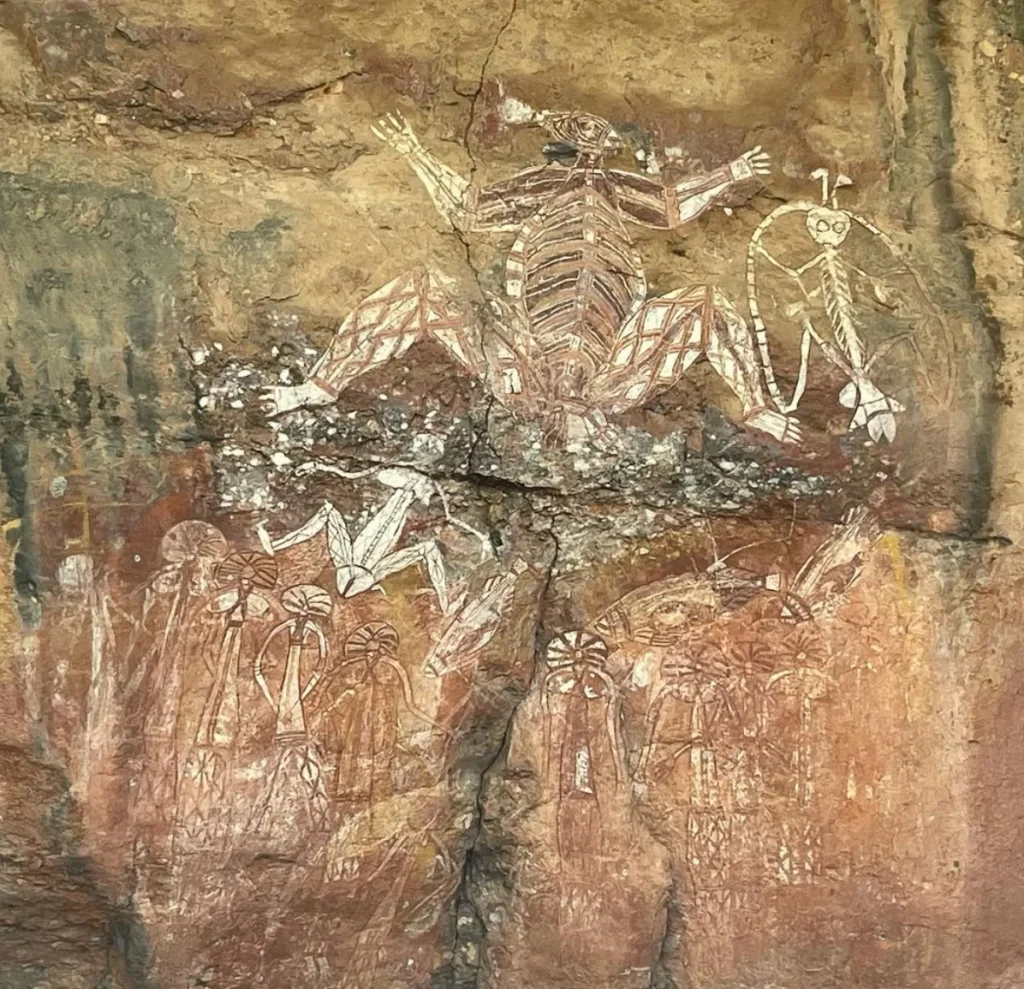
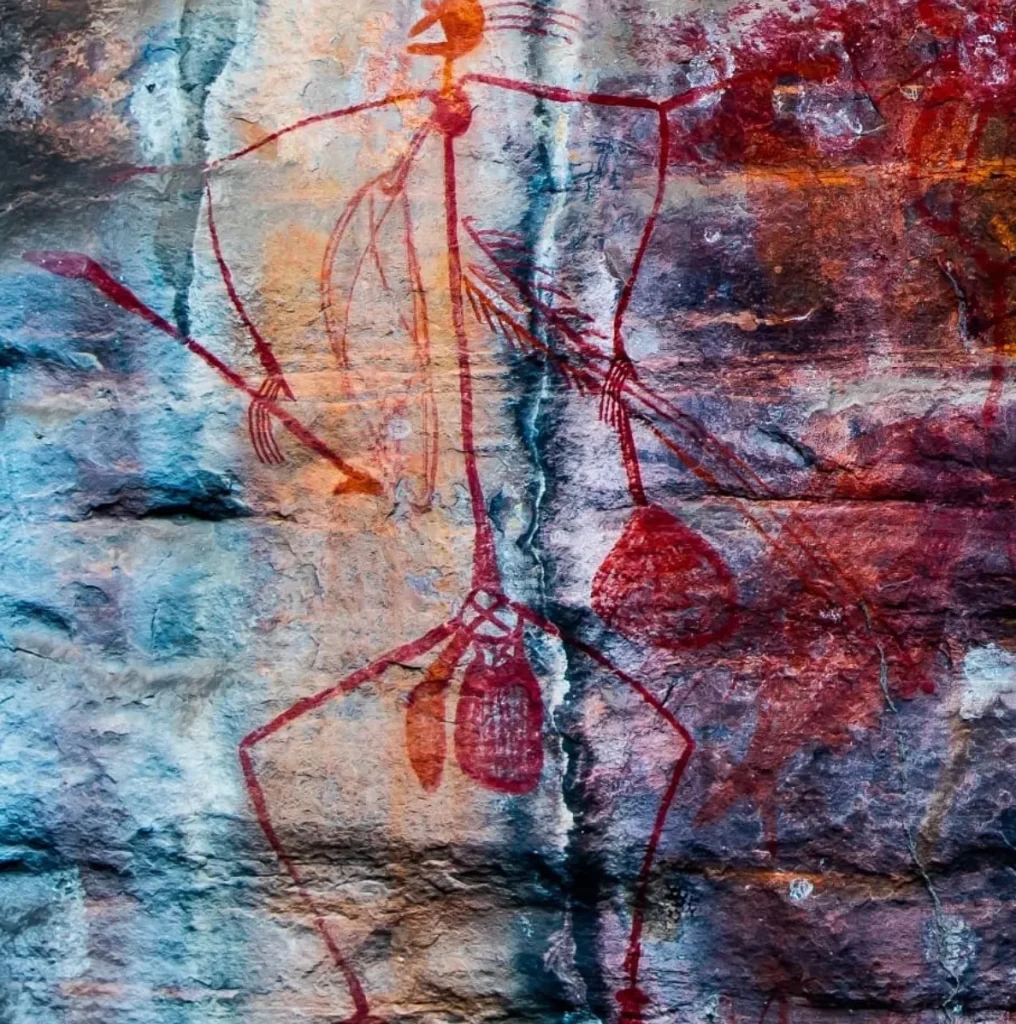
Immerse yourself in Kakadu’s Aboriginal culture during the wet season. Guided Kakadu tours led by traditional owners will give you a deep understanding of the indigenous culture, Dreamtime stories and ancient rock art at sites like Nourlangie Rock and Ubirr Rock. The pre-monsoon season means many cultural sites are more accessible and vibrant and you can see the angled rock formations and Gubara Pools in all their glory.
Wet Season Kakadu
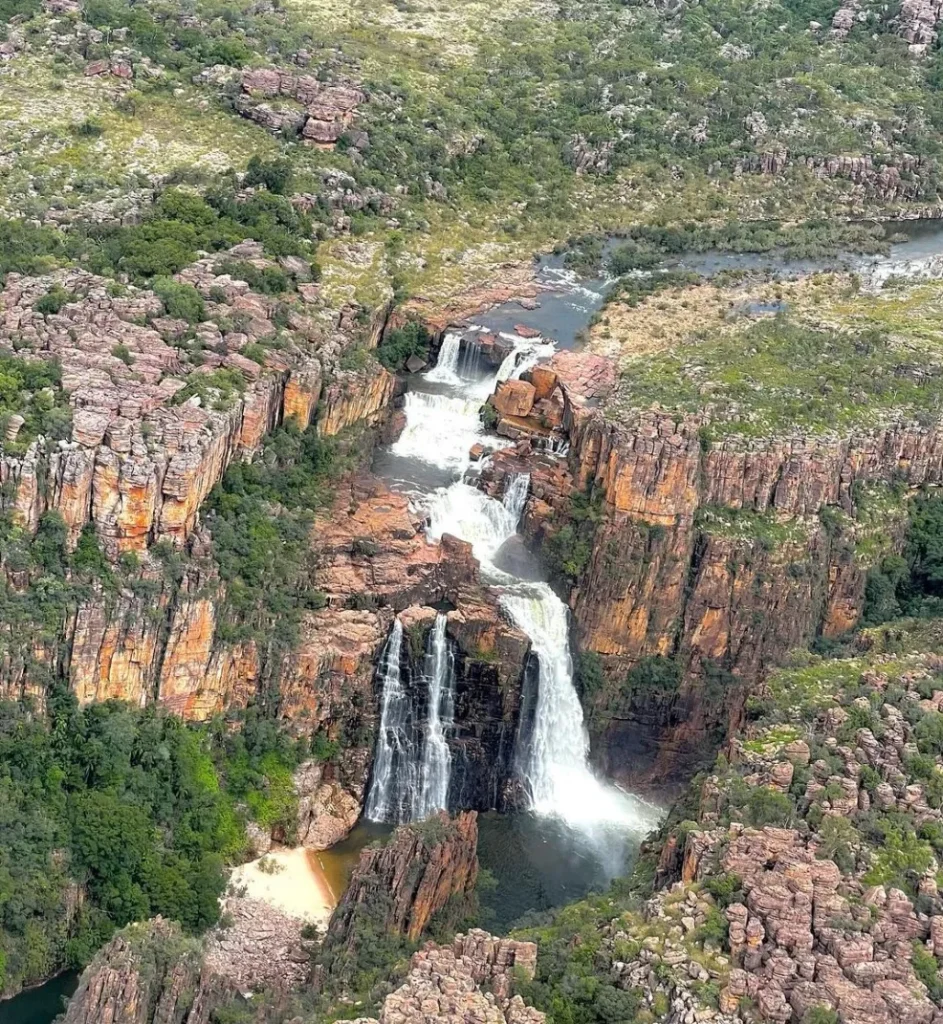
Weather
The wet season in Kakadu is hot, humid and wet. Daytime temperatures are 25-35°C (77-95°F) and often windy and stormy in the afternoon. Stay hydrated and wear light, loose clothing. The wet season may not be the most popular time due to the heat and afternoon storms, but it’s actually the best time to see the park at its most vibrant and beautiful. Rain brings life to the area, fills the air with a lovely scent and cools down the heat.
Accessibility and Transport
Some parts of Kakadu, including Arnhem Land, may be closed during the wet season due to flooded roads and heavy rain. Gravel roads and 4WD tracks can be rough and road access can be tricky. Check road conditions and park alerts before you go. If you don’t want to worry about transport, consider guided tours with Kakadu Cultural Tours or Yellow Water Cruises, they know the park and its seasonal challenges.
Accommodation
From camping sites to air-conditioned campervans and hotel rooms, there’s something for the wet season. Cooinda Lodge & Campground is a good option if you want to stay near Yellow Water Billabong, the Mercure Crocodile Hotel is a luxury option in Jabiru. If you want to get adventurous camping options, they are available at several sites along the Mary River Road and Mamukala Wetlands. Whether you choose a lagoon pool at Aurora Kakadu or the camping grounds at Gunlom Falls, you’ll find somewhere to stay.
Wet Season Activities in Kakadu
Wildlife
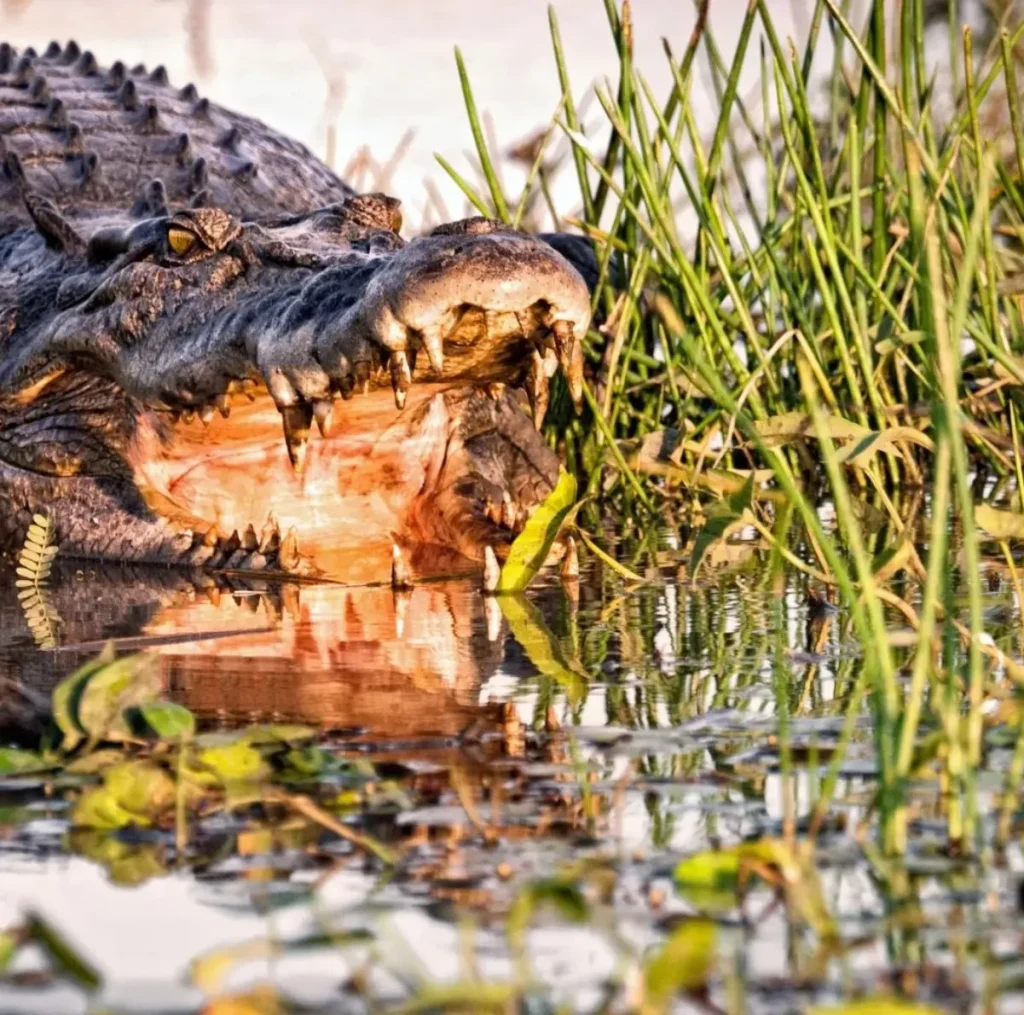
The wet season is the best time to see Kakadu’s wildlife. Birds of prey are out and about, waterbirds are everywhere in the wetlands, and birdwatching is a favourite pastime. Look out for magpie geese, jabiru and kingfishers. The extra water attracts Estuarine crocodiles so that you can see them from a safe distance. Nighttime animal activity is also more active so that you can see animals in their natural habitat.
Walking
The rain doesn’t stop you from walking Kakadu. The Anbangbang Billabong Loop and Nawurlandja Lookout are good for views and to see the park’s unique plants and animals. If you want more adventure, 4WD tracks will take you to hidden gems like Florence Falls. Always wear waterproof shoes and carry rain gear.
Boat Cruises and Fishing
See Kakadu from a different perspective, as compared to boat cruises. Yellow Water Cruises, for example, takes you through the Yellow Water Billabong and shows you the area’s different ecosystems and wildlife. These cruises often have commentary about the area’s ecology and history. Fishing enthusiasts can fish for barramundi and other native species in the Mary River and surrounding waters.
This table helps you plan your trip:
| Activity | Description | Accessibility |
|---|---|---|
| Wildlife Watching | Spot diverse species at Mamukala Wetlands. | Accessible at most wetlands. |
| Bushwalking and Hiking | Short scenic walks with varying fitness levels. | Limited access due to wet conditions. |
| Boat Cruises | Explore Yellow Water and other billabongs. | Available, weather permitting. |
| Fishing | Catch barramundi in Kakadu’s rivers. | Accessible with guided tours. |
| Rock Art Tours | Learn about Aboriginal culture and history. | Accessible with Kakadu Cultural Tours. |
Top Tips for visiting Kakadu in the Wet Season
- Pack: Waterproof clothing, sturdy hiking boots and quick drying material. Don’t forget insect repellent and sun protection.
- Stay Informed: Check the weather forecast and park updates. Be prepared to change your plans if the weather is bad.
- Follow the Rules: Always follow the signs, especially near waterways with Crocs. Follow the locals and tour operator.
- Be Flexible: The wet season is unpredictable so be prepared to be flexible. Prioritise your must see’s but leave room for spontaneity.
- Check the Access: Check the road conditions and boat ramp availability for boat cruises at your site.
When to visit Kakadu in the Wet Season?
November and April are the transition months where you get the best of both worlds – lush landscapes and manageable weather. Fewer cyclones and slightly less rain, if you want to experience the wet season without the weather interruptions these are the months to visit. The pre-monsoon season is a great time to visit the popular sites of Kakadu with mild daytime temperatures and the landscape at its silvery green best.
Nearby: Stay Longer
Why not stay longer and visit Litchfield National Park, which has its own waterfalls, beaches and wetlands? The two parks are complementary and will give you the full experience of the Northern Territory’s natural and indigenous heritage.
End
Kakadu, in the wet season, is a wild and wonderful place that shows off the park’s natural and cultural beauty in a way that few other seasons do. From the waterfalls and green landscapes to the cultural experiences and wildlife, the wet season is a once-in-a-lifetime experience of this iconic park. With the right gear and sense of adventure, you can make the trip of a lifetime through one of Australia’s most beautiful places.
FAQ
Is Kakadu open in the wet season?
Yes, many parts of Kakadu are open in the wet season but some areas may be closed due to flooding. Check the road conditions and consider a guided tour for access.
What to pack for Kakadu in the wet season?
Lightweight and quick drying clothing, rain jacket, sturdy waterproof boots, insect repellent, sun protection and plenty of water. A waterproof bag for electronics and important documents is also recommended.
Are the waterfalls more impressive in the wet season?
Yes! The wet season is the best time to see the waterfalls in full flow. Jim Jim and Twin Falls are at their most impressive.
Can I go bushwalking in Kakadu in the wet season?
Some walking trails are open but many are closed due to flooding. Short walks and guided tours are available for safe and scenic walking.
What wildlife?
Saltwater crocs, magpie geese, egrets, jabirus and more. Wetlands are at their birdy best.
